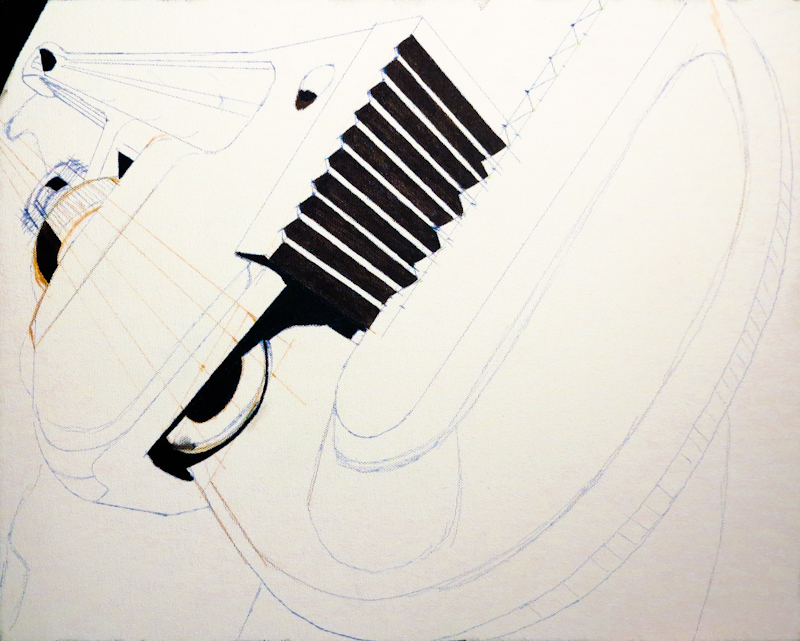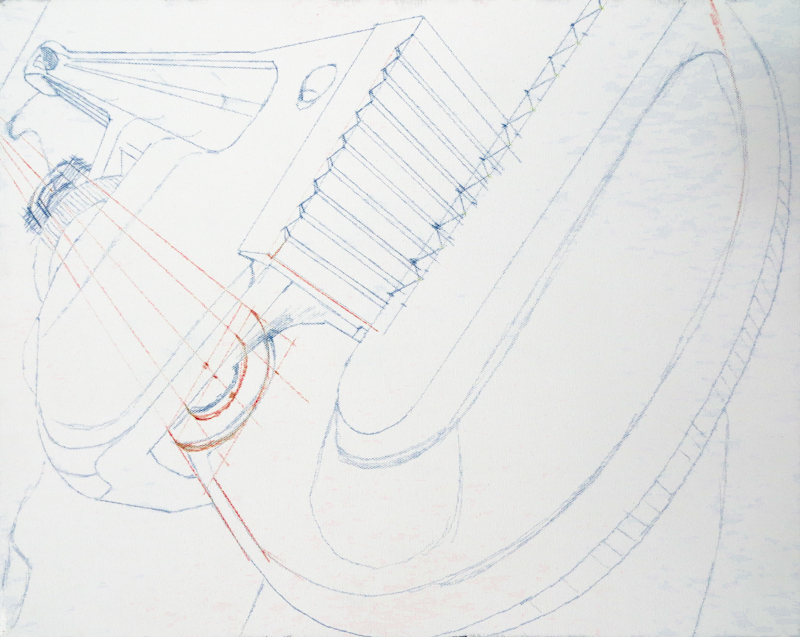This evening I started working on the teeth on the upper half of the jaws and then on the side of the linear gear. I had to work with a bunch of new vanishing points, but am now pretty happy with the drawing. I “inked in” jaws and the linear gear in acrylic to get a feel for how they would look, before starting on the oil-based under-painting. The jaws use a blend of Paynes Gray, Raw Umber, Burnt Sienna, and Titanium White.
I finished my session by quickly painting in the table top and shadows using a thin wash of Prussian Blue, Burnt Umber, and Titanium White from Winsor Newton’s Artisan line of water mixable oils. Overall I like the look, but I think the final background should be lighter along the top edge, and probably less saturated.






